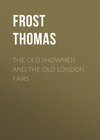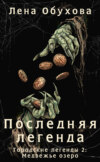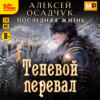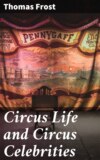Loe raamatut: «The Old Showmen and the Old London Fairs»
PREFACE
Popular amusements constitute so important a part of a nation’s social history that no excuse need be offered for the production of the present volume. The story of the old London fairs has not been told before, and that of the almost extinct race of the old showmen is so inextricably interwoven with it that the most convenient way of telling either was to tell both. An endeavour has been made, therefore, to relate the rise, progress, and declension of the fairs formerly held in and about the metropolis as comprehensively and as thoroughly as the imperfect records of such institutions render possible; and to weave into the narrative all that is known of the personal history of the entertainers of the people who, from the earliest times to the period when the London fairs became things of the past, have set up shows in West Smithfield, on the greens of Southwark, Stepney, and Camberwell, and in the streets of Greenwich and Deptford. Those who remember the fairs that were the last abolished, even in the days of their decline, will, it is thought, peruse with interest such fragments of the personal history of Gyngell, Scowton, Saunders, Richardson, Wombwell, and other showmen of the last half century of the London fairs, to say nothing of the earlier generations of entertainers, as are brought together in the following pages.
The materials for a work of this kind are not abundant. The notices of the fairs to be found in records of the earlier centuries of their history are slight, and more interesting to the antiquary than to the general reader. Newspapers of the latter half of the seventeenth century, and the first half of the eighteenth, afford only advertisements of the amusements, and of the showmen of the former period we learn only the names. During the latter half of the last century, the showmen seldom advertised in the newspapers, and few of their bills have been preserved. No showman has ever written his memoirs, or kept a journal; and the biographers of actors who have trodden the portable stages of Scowton and Richardson in the early years of their professional career have failed to glean many incidents of their fair experiences. All that can be presented of the personal history of such men as Gyngell, Scowton, Richardson, and Wombwell, has been gathered from the few surviving members of the fraternity of showmen, and from persons who, at different periods, and in various ways, have been brought into association with them. If, therefore, no other merit should be found in the following pages, they will at least have been the means of preserving from oblivion all that is known of an almost extinct class of entertainers of the people.
CHAPTER I
Origin of Fairs – Charter Fairs at Winchester and Chester – Croydon Fairs – Fairs in the Metropolis – Origin of Bartholomew Fair – Disputes between the Priors and the Corporation – The Westminster Fairs – Southwark Fair – Stepney Fair – Ceremonies observed in opening Fairs – Walking the Fair at Wolverhampton – The Key of the Fair at Croydon – Proclamation of Bartholomew Fair.
There can be no doubt that the practice of holding annual fairs for the sale of various descriptions of merchandise is of very great antiquity. The necessity of periodical gatherings at certain places for the interchange of the various products of industry must have been felt as soon as our ancestors became sufficiently advanced in civilisation to desire articles which were not produced in every locality, and for which, owing to the sparseness of the scattered population, there was not a demand in any single town that would furnish the producers with an adequate inducement to limit their business to one place. Most kinds of agricultural produce might be conveyed to the markets held every week in all the towns, and there disposed of; but there were some commodities, such as wool, for example, the entire production of which was confined to one period of the year, while the demand for many descriptions of manufactured goods in any one locality was not sufficient to enable a dealer in them to obtain a livelihood, unless he carried his wares from one town to another. What, therefore, the great fair of Nishnei-Novgorod is at the present day, the annual fairs of the English towns were, on a less extensive scale, during the middle ages.
One of the most ancient, as well as the most important, of the fairs of this country was that held on St. Giles’s Hill, near Winchester. It was chartered by William I., who granted the tolls to his cousin, William Walkelyn, Bishop of Winchester. Its duration was originally limited to one day, but William II. extended it to three days, Henry I. to eight, Stephen to fourteen, and Henry II. (according to Milner, or Henry III., as some authorities say) to sixteen. Portions of the tolls were, subsequently to the date of the first charter, assigned to the priory of St. Swithin, the abbey of Hyde, and the hospital of St. Mary Magdalene. On the eve of the festival of St. Giles, on which day the fair commenced, the mayor and bailiffs of Winchester surrendered the keys of the four gates of the city, and with them their privileges, to the officers of the Bishop; and a court called the Pavilion, composed of the Bishop’s justiciaries, was invested with authority to try all causes during the fair. The jurisdiction of this court extended seven miles in every direction from St. Giles’s Hill, and collectors were placed at all the avenues to the fair to gather the tolls upon the merchandise taken there for sale. All wares offered for sale within this circle, except in the fair, were forfeit to the Bishop; all the shops in the city were closed, and no business was transacted within the prescribed limits, otherwise than in the fair. It is probable, however, that most of the shopkeepers had stalls on the fair ground.
This fair was attended by merchants from all parts of England, and even from France and Flanders. Streets were formed for the sale of different commodities, and distinguished by them, as the drapery, the pottery, the spicery, the stannary, etc. The neighbouring monasteries had also their respective stations, which they held under the Bishop, and sometimes sublet for a term of years. Milner says that the fair began to decline, as a place of resort for merchants, in the reign of Henry VI., the stannary, that is, the street appointed for the sale of the products of the Cornish mines, being unoccupied. From this period its decline seems to have been rapid, owing probably to the commercial development which followed the extinction of feudalism; though it continued to be an annual mart of considerable local importance down to the present century.
The description of this fair will serve, in a great measure, for all the fairs of the middle ages. Some of them were famous marts for certain descriptions of produce, as, for examples, Abingdon and Hemel Hempstead for wool, Newbury and Royston for cheese, Guildford and Maidstone for hops, Croydon and Kingston summer fairs for cherries; others for manufactured goods of particular kinds, as St. Bartholomew’s, in the metropolis, for cloth (hence the local name of Cloth Fair), and Buntingford for hardwares. More usually, the fair was an annual market, to which the farmers of the district took their cattle, and the merchants of the great towns their woollen and linen goods, their hardwares and earthenwares, and the silks, laces, furs, spices, etc., which they imported from the Continent. These, as at Winchester, were arranged in streets of booths, fringed with the stalls of the pedlars and the purveyors of refreshments, for the humbler frequenters of the fair. The farmers, the merchants, and the customers of both, resorted to the more commodious and better-provided tents, in which, as Lydgate wrote of Eastcheap in the fifteenth century,
“One cried ribs of beef, and many a pie;
Pewter pots they clattered on a heap;
There was harp, pipe, and minstrelsy.”
Of equal antiquity with the great fair at Winchester were the Chester fairs, held on the festivals of St. John and St. Werburgh, the tolls of which were granted to the abbey of St. Werburgh by Hugh Lupus, second Earl of Chester and nephew of William I. There was a curious provision in this grant, that thieves and other offenders should enjoy immunity from arrest within the city during the three days that the fair lasted. Frequent disputes arose out of this grant between the abbots of St. Werburgh and the mayor and corporation of the city. In the reign of Edward IV., the abbot claimed to have the fair of St. John held before the gates of the abbey, and that no goods should be exposed for sale elsewhere during the fair; while the mayor and corporation contended for the right of the citizens to sell their goods as usual, anywhere within the city. The citizens carried the point in their favour, and the abbot was induced to agree that the houses belonging to the abbey in the neighbourhood of the fair should not be let for the display of goods until those of the citizens were occupied for that purpose. Disputes between the abbey and the city concerning the fair of St. Werburgh continued until 1513, when, by an award of Sir Charles Booth, the abbey was deprived of its interest in that fair.
Croydon Fair dated from 1276, when the interest of Archbishop Kilwardby obtained for the town the right of holding a fair during nine days, beginning on the vigil of St. Botolph, that is, on the 16th of May. In 1314, Archbishop Reynolds obtained for the town a similar grant for a fair on the vigil and morrow of St. Matthew’s day; and in 1343, Archbishop Stratford obtained a grant of a fair on the feast of St. John the Baptist. The earliest of these fairs was the first to sink into insignificance; but the others survived to a very recent period in the sheep and cattle fair, held in latter times on the 2nd of October and the two following days, and the cherry fair, held on the 5th of July and the two following days. Whatever may have been the relative importance of these fairs in former times, the former, though held at the least genial season, was, for at least a century before it was discontinued, the most considerable fair in the neighbourhood of the metropolis; while the July fair lost the advantage of being held in the summer, through the contracted limits within which its component parts were pitched. These were the streets between High Street and Surrey Street, and included the latter, formerly called Butcher Row; and the only space large enough for anything of dimensions exceeding those of a stall for the sale of toys or gingerbread, was that at the back of the Corn Market, on which the cattle-market was formerly held.
The first fair established in the metropolis was that which, originally held within the precincts of the priory of St. Bartholomew, soon grew beyond its original limits, and at length came to be held on the spacious area of West Smithfield. The origin of the fair is not related by Maitland, Entick, Northouck, and other historians of the metropolis, who seem to have thought a fair too light a matter for their grave consideration; and more recent writers, who have made it the subject of special research, do not agree in their accounts of it. According to the report made by the city solicitor to the Markets Committee in 1840, “at the earliest periods in which history makes mention of this subject, there were two fairs, or markets, held on the spot where Bartholomew Fair is now held, or in its immediate vicinity. These two fairs were originally held for two entire days only, the fairs being proclaimed on the eve of St. Bartholomew, and continued during the day of St. Bartholomew and the next morrow; both these fairs, or markets, were instituted for the purposes of trade; one of them was granted to the prior of the Convent of St. Bartholomew, ‘and was kept for the clothiers of England, and drapers of London, who had their booths and standings within the churchyard of the priory, closed in with walls and gates, and locked every night, and watched, for the safety of their goods and wares.’ The other was granted to the City of London, and consisted of the standing of cattle, and stands and booths for goods, with pickage and stallage, and tolls and profits appertaining to fairs and markets in the field of West Smithfield.”
Nearly twenty years after this report was made, and when the fair had ceased to exist, Mr. Henry Morley, searching among the Guildhall archives for information on the subject, found that the fair originated at an earlier date than had hitherto been supposed; and that the original charter was granted by Henry I. in 1133 to Prior Rayer, by whom the monastery of St. Bartholomew was founded. Rayer whose name was Latinised into Raherus, and has been Anglicised by modern writers into Rahere, was originally the King’s jester, and a great favourite of his royal master, who, on his becoming an Augustine monk, and, founding the priory of St. Bartholomew, rewarded him with the grant of the rents and tolls arising out of the fair for the benefit of the brotherhood. The prior was so zealous for the good of the monastery that, perhaps also because he retained a hankering after the business of his former profession, he is said to have annually gone into the fair, and exhibited his skill as a juggler, giving the largesses which he received from the spectators to the treasury of the convent.
It was admitted by the report of 1840 that documents in the office of the City solicitor afforded evidence of conflicting opinions on the subject in former times; and it seems probable that the belief in the two charters attributed to Henry II. and the dual character of the fair had its origin in the disputes which arose from time to time, during the thirteenth, fourteenth, and fifteenth centuries, between the civic and monastic authorities as to the right to the tolls payable on goods carried into that portion of the fair which was held in Smithfield, beyond the precincts of the priory. The latter claimed these, on the ground of the grant of the fair; the City claimed them, on the ground that the land belonged to the corporation. The dispute was a natural one, whether Henry II. had granted the Smithfield tolls to the City or not; and there is evidence on record that it arose again and again, until the dissolution of monasteries at the Reformation finally settled it by disposing of one of the parties.
In 1295 a dispute arose between the prior of St. Bartholomew’s and Ralph Sandwich, custos of the City, the former maintaining that, as the privileges of the City had become forfeited to the Crown, the tolls of the fair should be paid into the Exchequer. Edward I., who was then at Durham, ordered that the matter should be referred to his treasurer and the barons of the Exchequer; but, while the matter was pending, the disputants grew so warm that the City authorities arrested some of the monks, and confined them in the Tun prison, in Cornhill. They were released by command of the King, but thereupon nine citizens forced the Tun, and released all the other prisoners, by way of resenting the royal interference. The rioters were imprisoned in their turn and a fine of twenty thousand marks was imposed upon the City; but the civic authorities proposed a compromise, and, for a further payment of three thousand marks, Edward consented to pardon the offenders, and to restore and confirm the privileges of the City.
The right of the City to the rents and tolls of the portion of the fair held beyond the precincts of the priory was finally decided in 1445, when the Court of Aldermen appointed four persons as keepers of the fair, and of the Court of Pie-powder, a tribunal instituted for the summary settlement of all disputes arising in the fair, and deriving its name, it is supposed, from pieds poudres, because the litigants had their causes tried with the dust of the fair on their feet.
At the dissolution of monasteries, in the reign of Henry VIII., the tolls which had been payable to the priory of St. Bartholomew were sold to Sir John Rich, then Attorney-General; and the right to hold the fair was held by his descendants until 1830, when it was purchased of Lord Kensington by the Corporation of London, and held thereafter by the City chamberlain and the town clerk in trust, thus vesting the rights and interests in both fairs in the same body.
Westminster Fair, locally termed Magdalen’s, was established in 1257, by a charter granted by Henry III. to the abbot and canons of St. Peter’s, and was held on Tothill Fields, the site of which is now covered by the Westminster House of Correction and some neighbouring streets.
The three days to which it was originally limited, were extended by Edward III. to thirty-one; but the fair was never so well attended as St. Bartholomew’s, and fell into disuse soon afterwards.
There was another fair held in the adjoining parish of St. James, the following amusing notice of which in Machyn’s diary is the earliest I have been able to find: —
“The xxv. day of June [1560], Saint James fayer by Westminster was so great that a man could not have a pygg for money; and the bear wiffes had nother meate nor drink before iiij of cloke in the same day. And the chese went very well away for 1d. q. the pounde. Besides the great and mighti armie of beggares and bandes that were there.” Beyond the fact that it was postponed in 1603 on account of the plague, nothing more is recorded concerning this fair until 1664, in which year it was suppressed, “as considered to tend rather to the advantage of looseness and irregularity than to the substantial promoting of any good, common and beneficial to the people.”
Southwark Fair, locally known as Lady Fair, was established in 1462 by a charter granted by Edward IV. to the City of London, in the following terms: —
“We have also granted to the said Mayor, Commonalty, and Citizens, and their successors for ever, that they shall and may have yearly one fair in the town aforesaid, for three days, that is to say, the 7th, 8th, 9th days of September, to be holden, together with a Court of Pie-Powders, and with all the liberties to such fairs appertaining: And that they may have and hold there at their said Courts, before their said Minister or deputy, during the said three days, from day to day, hour to hour, and from time to time, all occasions, plaints, and pleas of a Court of Pie-Powders, together with all summons, attachments, arrests, issues, fines, redemptions, and commodities, and other rights whatsoever, to the said Court of Pie-Powders in any way pertaining, without any impediment, let, or hindrance of Us, our heirs or successors, or other our officers and ministers soever.”
This charter has sometimes been referred to as granting to the Corporation the right to hold a fair in West Smithfield, in addition to the fair the tolls of which were received by the priory of St. Bartholomew; but that “the town aforesaid” was Southwark is shown by a previous clause, in which it is stated that “to take away from henceforth and utterly to abolish all and all manner of causes, occasions, and matters whereupon opinions, ambiguities, varieties, controversies, and discussions may arise,” the King “granted to the said Mayor and Commonalty of the said City who now be, and their successors, the Mayor and Commonalty and Citizens of that City for the time being and for ever, the town of Southwark, with its appurtenances.”
The origin of Camberwell Fair is lost in the mist of ages. In the evidence adduced before a petty sessions held at Union Hall in 1823, on the subject of its suppression, it was said that the custom of holding it was mentioned in the ‘Domesday Book,’ but the statement seems to have been made upon insufficient grounds. It commenced on the 9th of August, and continued three weeks, ending on St. Giles’s day; but, in modern times, was limited, like most other fairs, to three days. It seems to have been originally held in the parish churchyard, but this practice was terminated by a clause in the Statute of Winchester, passed in the thirteenth year of the reign of Edward I. It was then removed to the green, where it was held until its suppression. Peckham Fair seems to have been irregular, and merely supplementary to Camberwell Fair.
Stepney Fair was of less ancient date. In 1664 Charles II., at the instance of the Earl of Cleveland, then lord of the manor of Stepney, granted a patent for a weekly market at Ratcliff Cross, and an annual fair on Michaelmas day at Mile End Green, or any other places within the manor of Stepney. The keeping of the market and fair, with all the revenues arising from tolls, etc., was given by the same grant, at the Earl of Cleveland’s request, to Sir William Smith and his heirs for ever. The right continued to vest in the baronet’s descendants for several years, but long before the suppression of the fair it passed to the lord of the manor, which, in 1720, was sold by the representatives of Lady Wentworth to John Wicker, Esquire, of Horsham, in Sussex, whose son alienated it in 1754. It is now possessed by the Colebrooke family.
The ceremonies observed in opening fairs evince the importance which attached to them. On the eve of the “great fair” of Wolverhampton, held on the 9th of July, there was a procession of men in armour, preceded by musicians playing what was known as the “fair tune,” and followed by the steward of the deanery manor and the peace-officers of the town. The custom is said to have originated with the fair, when Wolverhampton was as famous as a mart of the wool trade as it now is for its ironmongery, and merchants resorted to the fair, which formerly lasted fourteen days, from all parts of England. The necessity of an armed force for the maintenance of order during the fair in those days is not improbable. This custom of “walking the fair,” as it was called, was discontinued in 1789, and has not since been revived.
The October fair at Croydon was opened as soon as midnight had sounded by the town clock, or, in earlier times, by that of the parish church; the ceremony consisting in the carrying of a key, called “the key of the fair,” through its principal avenues. The booth-keepers were then at liberty to serve refreshments to such customers as might present themselves, generally the idlers who followed the bearer of the key; and long before daylight the field resounded with the bleating of sheep, the lowing of cattle, the barking of dogs, and the shouting of shepherds and drovers.
The metropolitan fair of St. Bartholomew was opened by a proclamation, which used to be read at the gate leading into Cloth Fair by the Lord Mayor’s attorney, and repeated after him by a sheriff’s officer, in the presence of the Lord Mayor, aldermen, and sheriffs. The procession then perambulated Smithfield, and returned to the Mansion House, where, in the afternoon, those of his lordship’s household dined together at the swordbearer’s table, and so concluded the ceremony.














